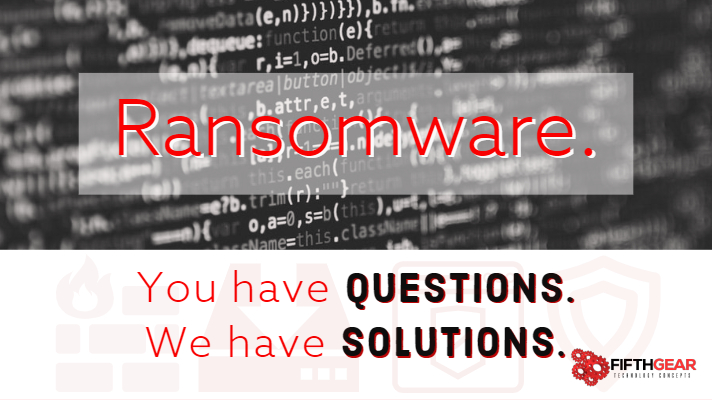
Technology is constantly changing and improving, and we have become increasingly dependent upon it. As smartphones have saturated the market, it has become increasingly difficult to “unplug” as more and more of our lives become integrated with technology. All the major platforms have Smart Devices — Amazon Echo, Google Home, Apple HomePod — that are always listening, always available to answer random questions, play music, turn on lights and other appliances, and even do light shopping. There are even Smart Refrigerators, that can interrupt WiFi and deliver messages throughout the home. In the business world, practically everything is running on technology. Our computers and devices, the applications and programs we use to produce and deliver content and products, the software for managing transactions, and the very essence of our business is powered by technology.
If you have never considered the potential impacts of a virus, malware or ransomware attack on your network, this article will give you valuable (and necessary information) to help you get started.
The first question should be — What are the most common threats that my network should be protected against?
The most common threats are viruses, spyware, and ransomware.
- A virus is a type of malware (an abbreviation of malicious software) that contains a contagious piece of code that is designed to spread to other computers connected on the same network.
- Adware, known as advertising supported software, though not malicious in nature, can be intrusive and compromise system performance.
- Spyware is a malicious software that spies on the user, tracking internet activities and gaining personal information. It is difficult to detect, because it can hide in plain sight, masked as a normal function program of the operating system.
- Trojans, named after the Trojan Horse in Greek history, is a virus that is designed to seem like a program that is safe to install. For example, there is a trojan program that mimics an antivirus application. The user installs the fake antivirus program, and is not only not protected, they have installed software that gives the hacker access to valuable information and systems.
- Ransomware was given its name because the advanced program blocks or restricts access to a user’s computer until a fee, or ransom, is paid.
All of these are, at best, a nuisance. But at worst, an infection can not only completely disrupt business operations, but result in catastrophic data loss.
So — your second question should be: How can I prevent this from happening to me?
We have a three-prong approach to Network Security to ensure this does not happen to our clients.
The three elements of our Network Security Solution are:

- Enterprise Grade Firewall — The firewall is the first line of defense for your network. The settings and exclusions can be completely customized, allowing for a powerful and thorough filtering process between the internet and your network.
- Antivirus/ Anti-malware Software — A high quality antivirus/anti-malware software deployed on every workstation.
- Secure Hourly Backup of Critical Data — We deploy devices that take hourly backups during the weekdays, and twice a day over the weekend. Backups are then uploaded to a secure offsite server, which is a key feature. If there was a catastrophe that physically damaged the server, and the backup device itself, you data could still be restored. The backup could be retrieved from the secure offsite location, and installed onto a new machine, and your business could be up and running again within hours — compared to the average loss of days or weeks without such a plan in place.
With these three elements in place, your business is protected and can be restored from virtually any disaster.
Your third question should be: How soon can I implement these changes to protect my business?
Please reach out to start a discussion about your company, and its specific needs. We would love to partner with you to secure your network and operations.
